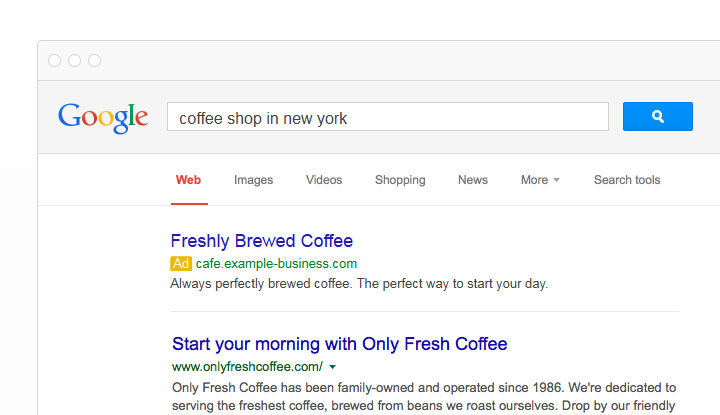
Small businesses that desire to be seen by customers at the very moment that they’re searching on Google for the products and services they offer turn to pay per click advertising. Not to mention the fact that you only pay when someone clicks to visit your company website or calls.
For business owners using PPC advertising to generate more clients and sales leads, it’s important to understand how your campaign’s quality score is relevant to PPC buys. In simplistic terms, quality score (also known as QS) determines your advertisements’ rank and cost-per-click (CPC). Also, it’s a good way to determine keyword significance. By understanding quality score, you are better equipped to increase conversions and ad rankings on Google.
Quality Score Explained
“The 1-10 Quality Score reported for each keyword in your account is an estimate of the quality of your ads and landing pages triggered by that keyword. Having a high Quality Score means that our systems think your ad and landing page are relevant and useful to someone looking at your ad. You can find out your Quality Score for any of your keywords.” (Source: Google)
Simply put, the way Google looks at your quality score is the more clicks your ads generate, the more relevant your offer and ads are, which results in a higher ranking position at a lower cost. Also, think of it this way: an optimized quality score means a higher return on investment (ROI) which means your ads and business are more profitable.
A higher quality score also equals a lower cost per conversion (i.e., the total cost paid for an advertisement in relation to the success in achieving the goal of that advertisement). This means that you are meeting potential customer’s needs and wants in lieu of throwing irrelevant content their way. When you tailor PPC ads to your target audience, in turn, you become more appealing – and again, more profitable.
Google shares a good example of this feature in action.
“Let’s say that you own a website that specializes in socks, and Sam, a customer, is looking for striped socks. Wouldn’t it be great if Sam typed “striped socks” into Google search, saw your ad about striped socks, clicked it, and then landed on your webpage and bought some spiffy new striped socks? What would happen if, on the other hand, Sam simply saw an ad about “socks” or “clothes,” especially if he saw it together with a competitor’s ad about “striped socks”? In the first case, the customer searches and finds exactly what he’s looking for. That’s what we consider a great user experience, and that’s what can earn you a high Quality Score. What’s more, relevant ads tend to earn more clicks, appear in a higher position, and bring you the most success.”
Increasing Your Quality Score
One of your PPC campaign goals should be to increase your ad’s quality score. There are a few simple steps to achieve this:
Step 1 – Keywords
This is essential when it comes to quality score and a higher Adwords PPC ranking. Having relevant, organized keywords is vital to a thriving PPC campaign. Keywords help online searchers find your website, so make sure to perform adequate keyword research and find out the best keywords for your business.
Step 2 – Landing Pages
Optimization is key! Make your landing pages relevant and easy for visitors to navigate. In order to accomplish this, you want to create pages that will connect with ad groups. Relevance is incredibly important.
Step 3 – Groups
Create specific ad groups that are relevant to your company. As PPC Hero explains, “Ad Group-level Quality Score is a way to determine which areas you need to work on within a campaign. For instance, if you have a low keyword QS in one ad group, but your overall average is a 7, versus an ad group with an average of a 4, you get a clear picture of where you need to focus first. Working on your lowest average QS areas first helps you achieve a better ROI.You should look for ways to restructure your campaigns and ad groups, and edit low CTR ads to boost ad group QS.” Remember, an effective ad will result in a higher CTR.
When it comes to Adwords PPC quality scores, relevance, keywords, and organization are key. Make sure your ads target the correct audience. The more relevant your PPC ads are the more clicks they will receive alongside a higher search engine results page rank.
This article has been edited and condensed.
Jacob Baadsgaard is the CEO of Disruptive Advertising. He is a passionate digital marketer and entrepreneur with 7 years of enterprise digital marketing experience. He personally managed over 40 million dollars in annual marketing budget and consulted many of the Inc. 100 companies while at Adobe, including groups like: GE, John Deere, Citibank and Home Depot. Connect with @DisruptiveAds on Twitter.
© YFS Magazine. All Rights Reserved. Copying prohibited. All material is protected by U.S. and international copyright laws. Unauthorized reproduction or distribution of this material is prohibited. Sharing of this material under Attribution-NonCommercial-NoDerivatives 4.0 International terms, listed here, is permitted.













